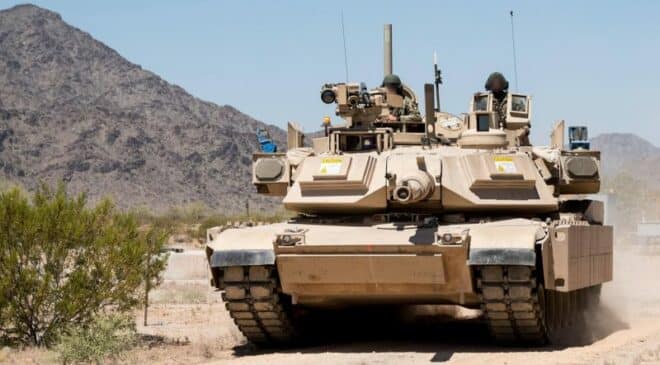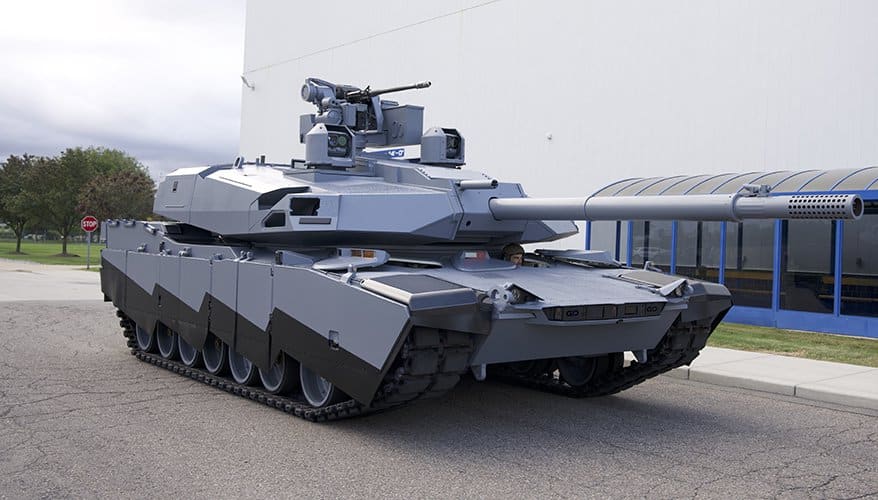In this section:
Since the US Army announced that it was turning towards a profound transformation of the armored vehicle called M1E3 Abrams to mark its disruptive nature, and the cancellation of the M1A2 SEPv4 version considered too heavy, announcements have multiplied across the Atlantic regarding the expectations of the American army for its new battle tank.
Characteristics of the US Army M1E3 Abrams
Several key features were announced during the initial announcement by Deputy Secretary of the Army Gabe Camarillo in early September, in particular that the tank must be lighter than its ancestor, to increase its mobility and reduce its consumption and logistical footprint.
Indeed, over successive developments, the American Abrams increased from 55 to 68 tonnes, certainly improving its efficiency and protection, but significantly increasing its consumption, while reducing its mobility and preventing it from using certain infrastructures. civil like bridges.
More information was given by Major General Glenn Dean, who pilots the program for the US Army, during an interview given to the American site Defensenews.com.

We thus learn that beyond increased mobility, a particular effort will be made in the design of the new tank, to significantly reduce its logistical footprint, whether in terms of fuel or maintenance of the armored vehicle, become very restrictive over the years.
A volumetric APS to protect against diving threats
A new key feature of the M1E3 was revealed on the same occasion. Indeed, for General Dean, the new Abrams must be protected by an active protection system (APS). However, contrary to what was planned with M2SEPv4, the Leopard 2A8 or Challenger 3, this protection must be volumetric and capable of dealing with threats arriving from above.
The fact is, it appears that in Ukraine, but also much more recently in Israel, most of the tanks destroyed were either by lurking munitions, diving missiles like the Javelin, as well as, in many cases, by simple commercial drones equipped with droppable charges, like anti-tank rockets.
However, all of the tanks in service today have little armor on the roof, while the rare tanks equipped with a hard kill APS, like the Israeli Merkava, are only protected by this system against direct fire.

75% of this article remains to read,
Subscribe to access it!
The Classic subscriptions provide access to
articles in their full version, and without advertising,
from 6,90 €.
Newsletter subscription
Register for the Meta-Defense Newsletter to receive the
latest fashion articles daily or weekly



[…] Since the US Army announced that it was turning towards a profound transformation of the armored vehicle called M1E3 Abrams to highlight its disruptive nature, and […]